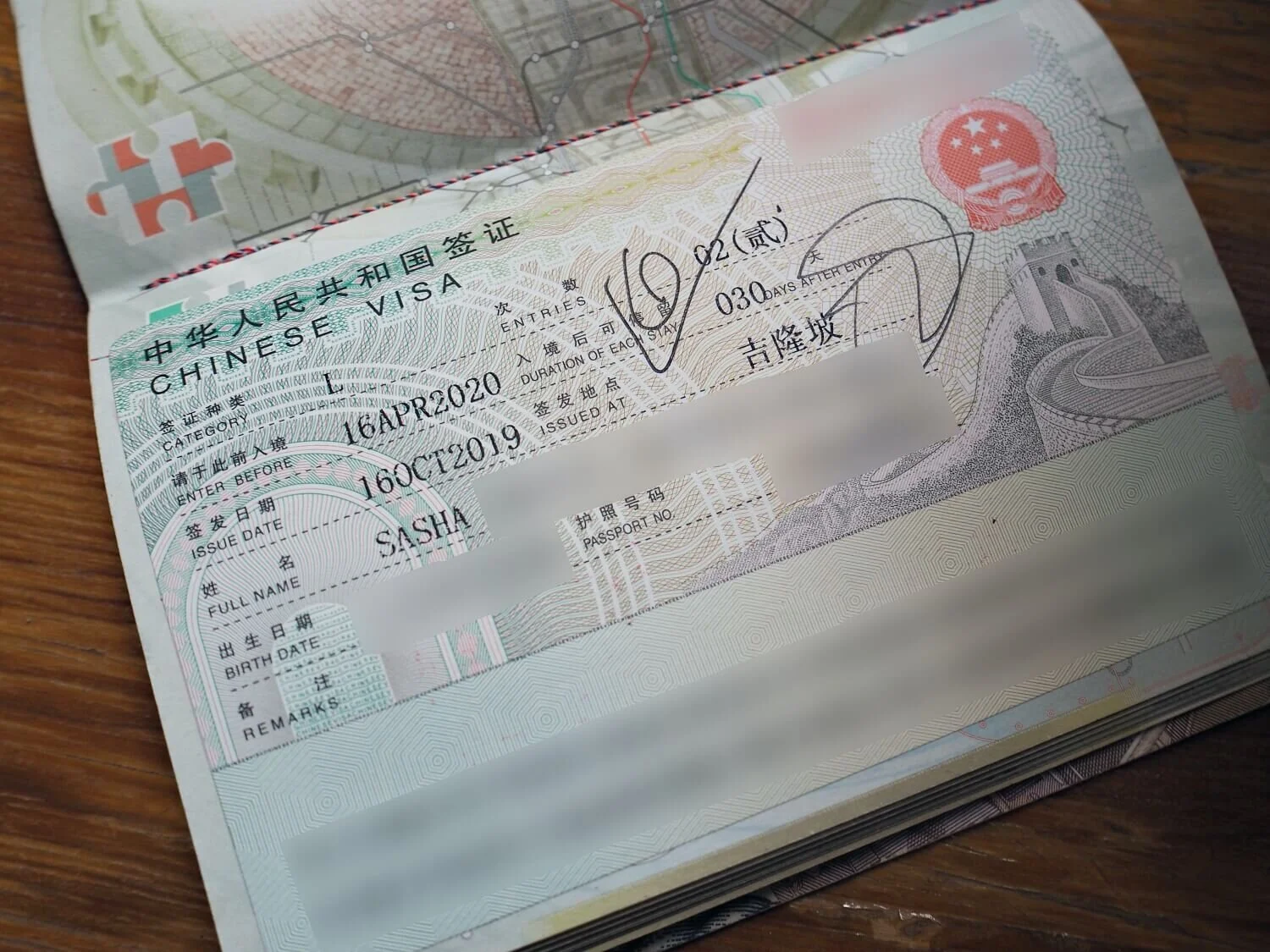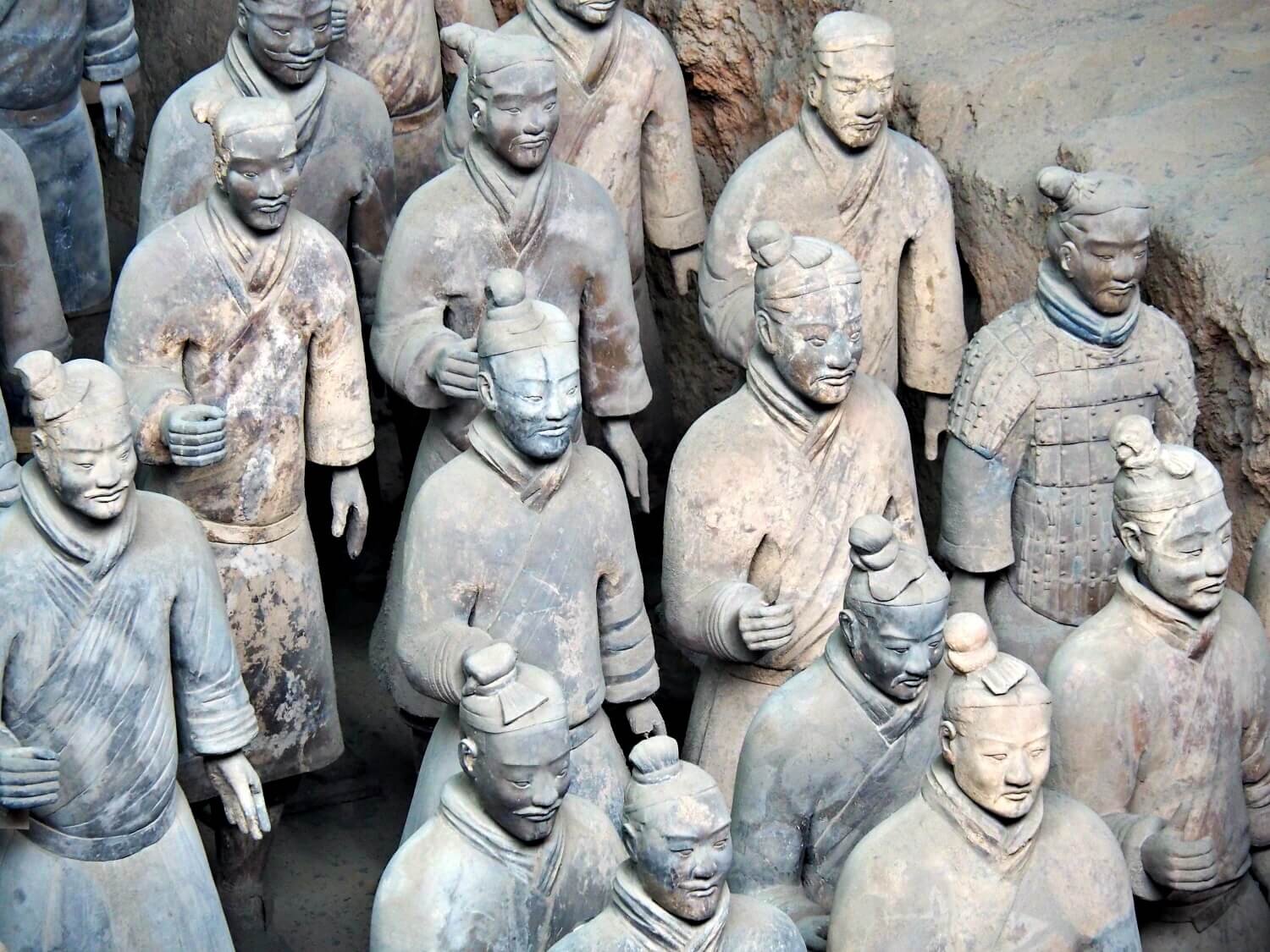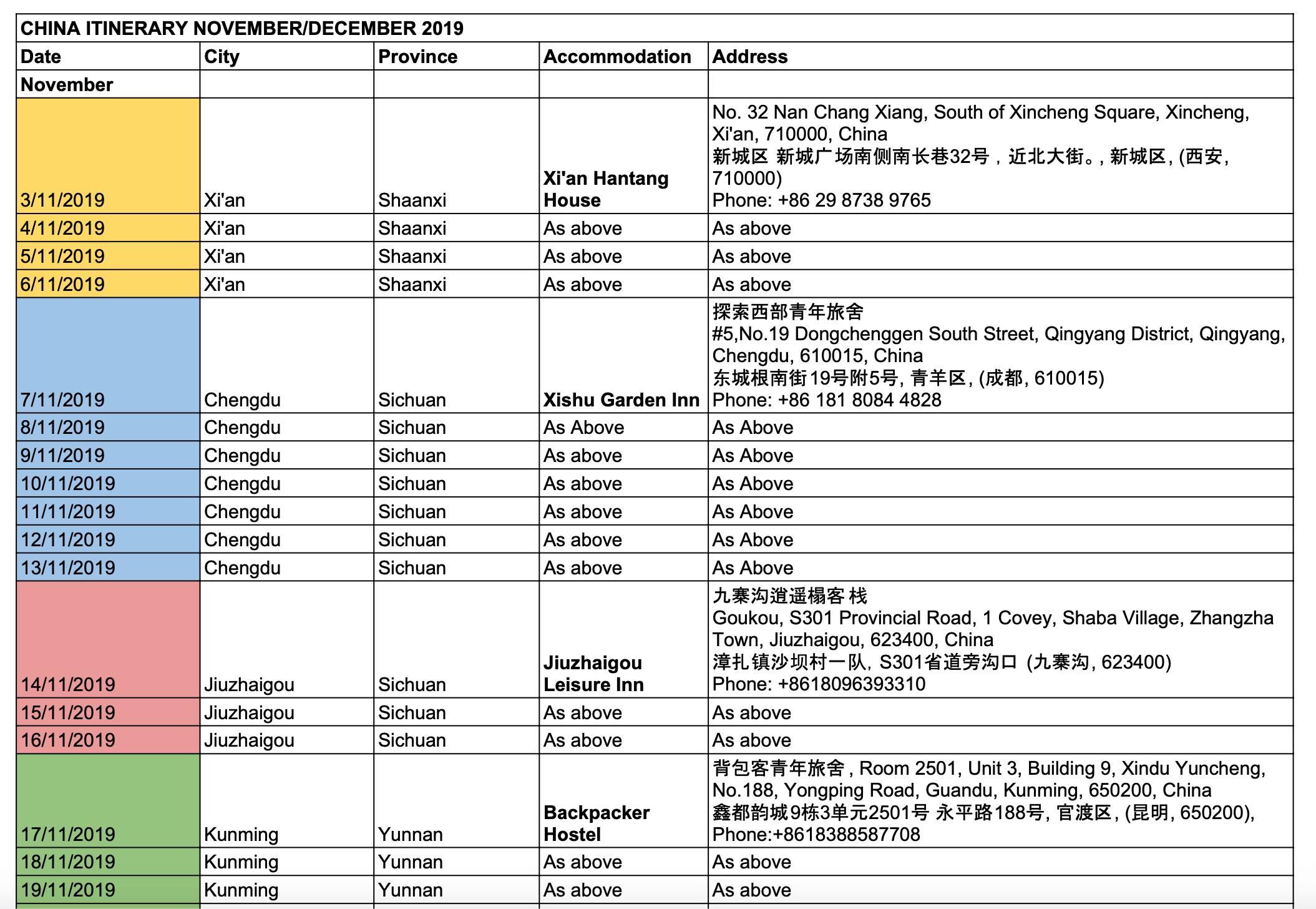The Complete Guide to Getting a Chinese Visa in Kuala Lumpur, Malaysia
Everything you need to know about getting a Chinese visa in Kuala Lumpur, Malaysia, including fees, required documents and submission guidelines.
Contents
Three Important Things to Know About Getting a Chinese Visa in KL
How to get a Chinese Tourist Visa in Kuala Lumpur
We recently spent 8 weeks travelling through China, but before we could even set foot in the Middle Kingdom, there was something we really needed first...a visa.
I will admit that I was really worried about this as the Chinese visa process isn't renowned for being the easiest, with lots of paperwork involved.
To complicate matters we were on a tourist visa in Malaysia and we weren't even sure if we would be allowed to apply for a Chinese tourist visa in Kuala Lumpur. The guidance changes year-on-year with people being allowed to apply with a Malaysian tourist visa stamp in their passport in 2017, to the embassy only accepting applications from people actually resident in Malaysia in 2018. Aargh.
Getting to see the Terracotta Warriors in Xi’an was one of the (many) reasons we really wanted to go to China.
We also wanted more than the standard 30-day visa that is usually given to tourists. (Well I did. I always want something more). China is a sizeable country and we both knew that one month was nowhere near long enough to explore even half the places I had already bookmarked in my 'China travel' folder (travel is probably the only thing I like to be organised about). So we agreed that if we were going to apply for a visa, we would have to ask for one that gave us at least two months in the country.
This required a bit of research, mainly involving us reading all the existing blogs, TripAdvisor and Google reviews of people who had tried, succeeded and failed at getting a Chinese visa in Kuala Lumpur.
A lot of the information seemed out of date and actually made me feel even more nervous. Eventually, I decided to contact the Chinese Visa Application Service Centre who are in charge of processing all visa applications for the Chinese embassy in KL and asked them all my hopes, dreams and fears related to getting a Chinese visa. I crossed my fingers and waited for an answer.
Well, the good news is that these China visa service centre peeps are incredibly efficient and answered both of my emails super fast - so I’d recommend if you have any questions (even ones you think are stupid) that you go on their website, check out the FAQs and if in doubt, email them.
This story has a happy ending: we got our double-entry visas and were excited to be heading off to China. And the process actually turned out to be much easier than we expected.
Got your China visa and looking for some travel inspiration? Check out our article on 22 things we learned after 2 months travel in China!
If the idea of applying for a Chinese visa is stressing you out - relax, because we’ve got you. Here’s all the information you need to make the process as painless as possible.
Three Important Things To Know About Getting a Chinese Visa in Kuala Lumpur
1) When to apply for your Chinese tourist visa
You should submit your application within one month of your intended arrival date in China. Apply too early and you won’t be able to submit your documents. Apply too late and there might not be enough time for your visa to be processed before you need to leave. We applied about 19 days before our flight to China and it was busy season, but we still got our approved visas back in time.
2) Applying on a Malaysian tourist visa
The China visa service centre told us via email that we were eligible to apply for a China visa in Kuala Lumpur but our application would still be subject to the approval of the consular office in the Chinese embassy.
What they didn’t tell us was that when we went to submit our application forms and documents we would have to sign a waiver form: it basically said that we understood that our applications may be rejected because we were applying on Malaysian tourist visas and were not resident in the country. We also had to agree to still pay the administration fee if our applications were not approved.
Finally, the form had a small section asking us to justify why we were applying from Malaysia and not from our home country. Caught off guard, we had no idea what to write to improve our chances of getting our visas. In the end, we both wrote that we were travelling long term with no intention of returning to the UK within the next year and so we decided to apply from Kuala Lumpur because we used to live there and it was a city that we were familiar with.
3) How long is a Chinese tourist visa?
The centre told us that the duration of stay usually granted for British citizens is no more than 30 days. However, we could apply for a double-entry visa if we planned to exit China during the first month of our trip (we had mentioned in our email to them that we were considering visiting Macau as well). We were told that there are no multiple-entry visas available for British citizens.
Citizens of other countries may be eligible for longer durations of stay and for multiple entry visas. For more information, visit the Chinese Visa Application Service Centre website and if you can’t find what you are looking for, contact them via email.
How to get a Chinese Tourist Visa in Kuala Lumpur
1) Visit the Chinese Visa Service Centre website
This is basically where all the magic happens. Well, the application magic anyway. No longer do you need to visit the Chinese embassy to collect visa forms and all that malarky: instead, you have access to all the relevant information, FAQs and the form you need online. You actually do not need to go to the Chinese embassy in Kuala Lumpur for any part of this process. So please don’t waste your time by turning up there as they will just direct you to this site.
The Chinese Visa Application Service Centre website
2) Complete an application form
Here you have two choices: on the website you can download, print and manually complete the application form or you can complete an online application form, print it out and sign it. We decided to go for the second option, but I don’t think it matters.
When applying for the tourist visa (category L) I would strongly recommend going through the Step by Step Guidance section of the website to make sure that you complete the form correctly and understand what documents you need to provide.
A few more tips about the China visa application form in Malaysia:
Everything must be typed or written in English and ALL IN CAPITAL LETTERS.
Don’t leave any blank spaces on the form - if something doesn’t apply, just write/type ‘N/A’ or ‘NONE’.
When completing your itinerary, we would recommend giving as much detail as possible - the form requires you to give hotel addresses and indicate how long you will be staying in each place (more on how we did this below). Avoid mentioning your burning desire to visit Tibet or Xinjiang as this will definitely lead to your visa being rejected.
You don’t have to attach the passport photo to your form so don’t panic if you don’t have any glue. The staff at the service centre will do this for you.
Yes, Tibet is beautiful and is a bucket-list item for many travellers. Just don’t mention it on your visa application.
If there are some areas of the application form that you find confusing, I would also recommend reading this article on Viselio which outlines the small mistakes that people often make on their forms that lead to their application being rejected. This was particularly useful for us when we realised we had to give more details than we initially thought about being self-employed.
3) Book your appointment at the Chinese Visa Service Centre
The Chinese visa service centre has an online booking portal (also on their website) where you can make an appointment to submit your documents in person. Many people recommend choosing the first appointment slot at 9:00am as there won’t be much of a queue in front of you.
Once you have booked your appointment you will receive a confirmation email with your appointment time, the address of the service centre and a reference number. If you need to change or cancel your booking, you can use your reference number to access the booking portal on the site.
The address of the China Visa Application Service Centre is as follows:
Level 5 (submissions) and 6 (collection)
Hampshire Place Office
Jalan Mayang Sari 50450
Kuala Lumpur, Malaysia
Getting to the service centre is really easy, you can either take a Grab car (Malaysian version of Uber) or do what we did and hop on the metro to Ampang Park station. Take the right-hand side exits at the station and when you come out, turn right and walk straight up the street.
When you reach Bank of China on the corner, turn right and head straight down to the end of the road. The Hampshire Place building is on the left-hand side of the road. There are two buildings - one is marked ‘Residence’ and the other one marked ‘Office’. The office one is the one you need unless you live in Hampshire Place and want to pop home for a cup of tea or something.
I would recommend that you book your appointment as soon as possible because slots tend to fill up quickly during busy periods.
Our experience was a case in point: we tried to book an appointment and we discovered that the next available slot was on a Friday, leaving only 14 days for our visa to be processed. We felt like this would be cutting it pretty fine if anything went wrong so we decided to just try walking in (which you are allowed to do) figuring the queue wouldn’t be bad if we arrived early.
So, on a Tuesday morning, we arrived at 07:45am, to find a huge queue of people that started on the fifth floor and snaked its way up to the 15th floor!
Trying to stay busy and ignore the heat (there was no aircon) in the stairwell while waiting for the Chinese Visa Service Centre to open.
A man in the queue in front of us told us he had come the week before but had given up because the queue was so long. People continued to join the queue behind us until the centre opened at 9:00am.
More and more people joining the queue.
Almost there (well through to the corridor at least!)
The whole process took us about two and a half hours in the end, which wasn’t so bad and speaks to the incredible efficiency of the service centre.
Nevermind crowds at the visa office - avoiding huge crowds is one of the biggest challenges when visiting China. This is one of the reasons why we’d recommend visiting China during the low season in winter.
4) Prepare all the relevant documents
You won’t need this much paperwork.
The Step-by-Step guidance section of the website has a list of all the basic and supporting documents you will need to provide with your application. Here is a list of the basic documents we provided:
A completed visa application form each, filled in capital letters and signed (you’d be surprised how many people forget to do this!)
Our passports
2 x passport photos each - see photo requirements
1 photocopy each of the photo ID and observation page of our passports.
1 photocopy each of our Malaysian entry stamps in our passports.
Getting our passport photos taken in Little India in Kuala Lumpur. The lady told Vincent to put on a jacket so he would look smart for the photo.
The service centre website says that you only need one supporting document e.g. a flight reservation or a hotel booking but we decided to provide as much evidence as possible to show that we were truly serious about going to China because we were asking for a double-entry visa.
We provided the following supporting documents:
A copy of our flight booking with Air Asia. If you are worried about your visa being approved, some airlines offer fully refundable flights if you cancel within a short period. This is the minimum evidence you need, so make sure you have proof of booked return flights before you submit your application.
Copies of all our hotel bookings for two months - we used booking.com to book all our accommodation because they give you free cancellation, which is useful if your plans change or you decide you want to visit somewhere completely different. We ended up cancelling all our bookings once our visa was approved, because...well we had a more interesting route planned than we initially thought!
A separate itinerary that we colour coded (yep, we are extra like that), showing exactly where we were planning to be and when, plus hotel addresses. Admittedly, we made this before we realised we would also have to complete a detailed itinerary as part of our application form (arghh!) but it did make filling that in easier. We wanted a double-entry visa for 60 days and we used the following itinerary:
Xian (4 days) > Chengdu (7 days) > Jiuzhaigou (3 days) > Kunming (6 days) > Lijiang (4 days) > Guilin (3 days) > Yangshuo (1 day) > Guangzhou (1 day) > Macau (exit China for 2 days)
Zhangjiajie (4 days) > Xiamen (4 days) > Shanghai (5 days) > Suzhou (3 days) > Luoyang (4 days) > Beijing (5 days)
Having the colour coded itinerary really helped when we came to submit our application form.
The member of staff who was checking through our application form at first appeared confused as to how many days we intended to stay in China. She then looked at our itinerary and said: “Ahh, you are going to Macau”. She also used the itinerary to count up the number of days we said we were going to stay in the country.
All of our supporting documents were taken by the service centre, so we think it was definitely worth including them.
The Ruins of St Paul’s in Macau. It was beautiful and worth visiting for a couple of days.
Note: if you are in a rush and realise that you have forgotten to take a photocopy of everything you need, there is a photocopying machine available that you can use in the centre for a fee. They will not print anything from email or from a USB stick. They can also take passport photos for you but this service was not available on the day we visited.
5) Submit your application at the China Visa Service Centre
Application submissions are on level 5 of Hampshire Place Office. The office is open for visa application submissions from Monday to Friday between 09:00am and 15:00pm.
When we got to the front of the queue, a staff member at the front desk quickly checked through our application and supporting documents to make sure everything had been filled in correctly.
We were then given a number and moved into a waiting area. It was very busy and because there were so many people we couldn’t find a space to sit down. After about 25 minutes our number came up on a screen and we went to a window to submit our documents.
The staff member processing our application was polite and efficient. She checked through our documents and asked us questions about the number of days we planned to stay in China and the type of visa we were applying for. She then gave us the waiver form to sign (if you have no idea what I am talking about, skip back to number 2 of this section).
After that, all our paperwork and passports were put into a folder and we were given a visa collection slip: we would need to come back 4 days later to collect our visas. This didn’t mean that our visa application would definitely be approved, it just meant that we would be able to collect our documents in 4 days’ time either way.
Note: you definitely need your visa collection slip to collect your passport so don’t lose it.
You’ve submitted your documents and now it’s time to get planning. Check out our photo essay on China’s oldest tea house for inspiration!
6) Processing time
Regular applications are processed within 4 working days. If you’re in a hurry you can request an express application (3 days) or a rushed application (2 days) but bear in mind that this will cost a lot more. We submitted our application on a Tuesday morning and picked it up on Friday morning that week.
7) Fees
The cost of a double-entry tourist visa was 270MYR per person - around £50 each. You pay this fee when you collect your Chinese visa.
A single-entry tourist visa is cheaper - 200MYR, which is around £37.
All visa fees are payable in cash.
Visa fees vary depending on your nationality and visa type - here is a breakdown of visa fees charged by the centre.
8) Collecting your visa
You can collect your visa from 9:00am on the day you are asked to return (this information will be on your visa collection slip).
Visa collections are on level 6 of Hampshire Place Office - the same building that you visited to submit your application. The office is open from Monday to Friday between 09.00am and 16.00pm for visa collections.
Double-check you have the following items before you go to pick up your passport and visa:
Visa collection slip
Cash to pay your visa fee
We would advise you to arrive before the centre opens as collections are on a first-come, first-serve basis and there are no appointments for collections. During peak visa season there can be huge queues here as well.
When we arrived on level 6, a staff member gave us a number and asked us to wait in the waiting area. When our number came up on the screen, we made our way to the payment window.
We handed in our visa collection slip which was scanned and then we paid our visa fees. Once our payment was processed, our collection slip was stamped and we were redirected to the visa pickup window (we didn’t have to go far it was basically the next window along!)
After giving in our collection form, our passports were duly returned to us. The staff member told us to double-check that we had received the right documents and that all the information on our Chinese tourist visa was correct.
We checked everything through and saw that we had each received a double-entry Chinese tourist visa! BOOM! (I kind of had a niggling feeling that we had been approved when we were asked to pay the full visa fee: if you aren’t approved you only have to pay the administration fee of 70MYR).
And there you have it - a complete guide to successfully applying for a Chinese visa in Kuala Lumpur.
Good luck with applying and do let us know whether you found this article helpful. If the situation changes please drop us a line so we can update this information.
What’s the most difficult visa you have applied for? Have you applied for a China visa outside of your home country? Let us know in the comments below!
Looking for more travel inspiration? Click here to discover more of our favourite places around the world.



































